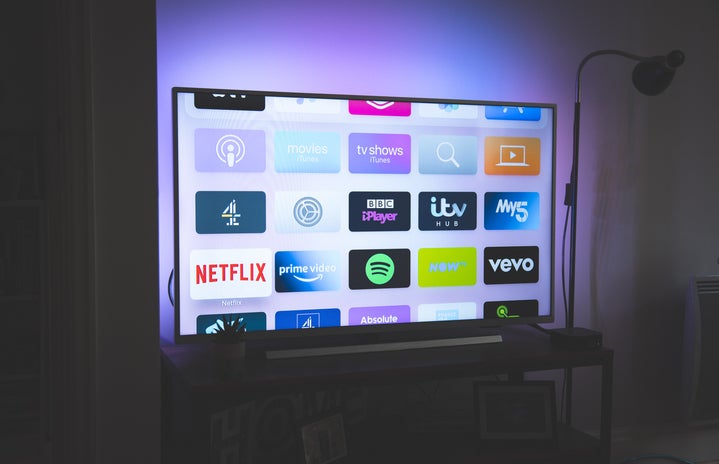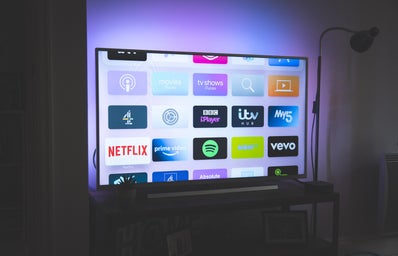It was back in 2008 that India was presented with its first streaming service BigFlix, courtesy of Reliance Entertainment. This was followed by the supplementation by the likes of SonyLiv and Disney Hotstar in the first half of the 2010s and Netflix in the latter, helping OTT platforms in traversing the course of consolidating a stronghold over media consumption in the country. Now, in the 20s, we are at a point where streaming services have become somewhat of a staple of most lives as the primary substitute for movie theatres. The switch seems to be major – a 2019 MoMAGIC survey found out that about 55% of the respondents now prefer streaming over DTH while the 2020 article “Are OTT platforms taking over theatrical experience?” predicts the market to grow by $5 billion by 2023. But even though this transition has arrived out of convenience, it also has the promise of something that has been awaited for a coon’s age – a qualitative shift in our cinema.
Indian cinema has been repeatedly and erroneously deemed synonymous with Bollywood whose neoteric version seems to be experiencing a dearth of ventures. Get a haphazardly written love story, poorly performed physics-defying stunts, a sexist item song, mix them all together, and there you have more than half of India’s hit movies for the past few years. It appears to be plagued by the redundant masala formula and subpar acting caliber. The industry is infected with diseases like those of the Kapoors and Khans: someone as incompetent as Sonam or Arjun can have a prosperous career thanks to their surnames and Salman Bhai pumps out senseless circus shows for movies that rake in millions. Actors with aptitude are overshadowed by celeb power and left in the dust. The stardom of big names that locks in the huge box office collections is only helping filmmakers renounce ingenuity in their art. What has become even more apparent is the marginalization of whatever is not Hindi. This has prevented many viewers from exploring the gems hidden in the regional film industries while they feed themselves highly commercialized dross. How many of us have watched the Marathi film Shwaas or the Malayalam one titled Jallikattu, both chosen as the Indian entries for Oscars? Such creations often go under the public’s radar despite the standards they promise to cater towards. Now with the popular consensus over the film industry’s degeneration, the audience has become much more open to some diversity in their tastes and thus, refamiliarizing themselves with valuable substance.
Recently with the nepotism debate being invigorated after the shocking demise of Sushant Singh Rajput and Kangana Ranaut’s selfish abuse of the tragedy, justified attention has been called to the ignorance of talented actors from ‘outside’. Their enterprises often fall behind in terms of profit collection because of a lack of advertising. OTT platforms have advanced the game by not only building an inclusive content library with widespread access, but also working on their own productions. Such work has helped elevate the status of actors like Radhika Apte. She is arguably one of the most gifted actresses Bollywood has seen in recent times but she is not as recognized for her impeccable record as, say, Alia Bhatt. Despite giving us Parched and Phobia, she is often reduced to her secondary roles in Pad Man and Andhadhun. With her recent work in Netflix’s Sacred Games and Ghoul, she is garnering well-deserved praise. The same goes for the highly underrated Rahul Bose who was acclaimed for his part in Bulbbul, one of the most talked about OTT premiered movies of 2020. Actors like Jaideep Ahlawat, Pankaj Tripathi, Arshad Warsi, Rajeev Khandelwal, and Barun Sobti have been experimenting successfully with this kind of media. Even established stars like Saif Ali Khan and Abhishek Bachchan have had a crack at online projects, warming up the future generations of performers to possibly the new normal.
Another section that has been getting unprecedented attention from streamers is the regional one. Online success of Assamese contributions like Aamis and Bornodi Bhotiai has shed limelight on the talent harbored in the Northeast. The South has been knocking it out of the park in terms of innovativeness; the additions of Tamil dark-comedy Super Deluxe and Malayalam drama Uyare on Netflix have been garnering attention for their gratifying writing. Flicks like Middle Class Melodies, Soorarai Pottru, and Mandela which premiered online have been subjected to popular praise as well. The same goes for many Marathi and Bengali productions.
Not to mention, streaming services have also tried to promote the consumption of non-Hindi material through their own efforts: Amazon Prime’s Director and Head of Content Vijay Subramaniam has stated, “We dub and subtitle content across languages to expand reach and access,” which has definitely hit its mark. Regional movies have gained an admirable reputation and a consequent bright future. As South star Samantha Akkineni has said, “OTT has opened up the possibility for stars, actors, and technicians from regional cinema.”
OTT platforms’ identity also included certain creative liberty but it is coming to its conclusion. The significant repulsion to the unrestrained explicitness of digital media has led to the government enforcing the Information Technology (Intermediary Guidelines and Digital Media Ethics Code) Rules 2021. While it cannot be denied that a favorable aspect of the media is being taken away, it does have its benefits in the fact that the regulation is self-led. With the public avidly responding to the fulfillment of their demand for meaningful cinema and capable performers, Bollywood can expect the pressure to increase. The blandness of its entertainment recipe cannot be digested after people have helped themselves to the riveting tastes of the underestimated. Hindi cinema needs to step up its game in terms of what it puts out in the commercially-minded spectrum. Superstar culture is fizzling out as the audience is tilting more towards the script aspect. With the collapse of cultural and language barriers as well as a gradual one of celebrity culture, an attentive and appreciative attitude is being inculcated towards all kinds of Indian cinema. A comprehensive perception of it will bring in healthy competition for Bollywood, enhancing it for the better.
Cinema has been a crown jewel of Indian culture for almost a centenary. It is not only one of the highly cherished multi-billion dollar industries the country is globally renowned for, but also an eloquent medium for reflection of its multifaceted realities as well as aspirations. The truth now is that India, along with the rest of the world, has fallen victim to the pandemic and while it may have been a curse for many of its businesses, it is a boon for OTT. These services have become the epitome of creative advancement. Indian cinema as a whole is being renovated to become something more integrated and refreshing. The only right decision is to embrace it.


